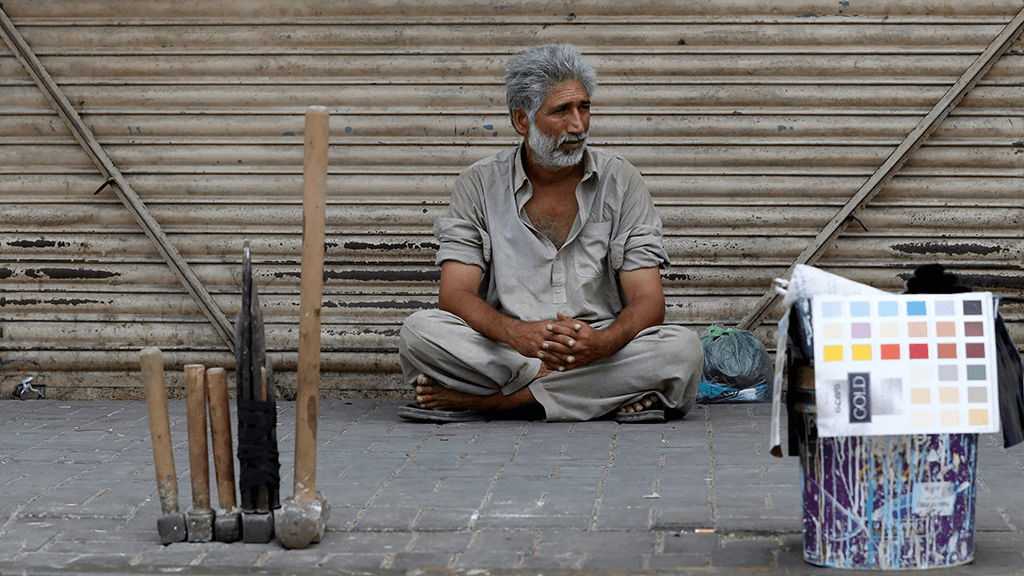The year 2020-21 started with the negative impact of the widespread COVID-19 pandemic on the lives and livelihoods of the people of Pakistan. The year 2019-20 had ended with a negative GDP growth rate of close to 1.5 percent, a bigger fall than initially estimated by the Pakistan Bureau of Statistics of negative 0.4 percent. Estimates are that by now over 5 million workers have been laid off and almost 20 million people have, unfortunately, fallen below the poverty line.
Various projections have been made about the prospects for the ongoing year, 2020-21. It is indeed fortunate that the incidence of COVID-19 has flattened out, although there is the risk that there may be a second wave of the pandemic.
Projections of the GDP growth rate in 2020-21 range from a low of only 0.5 percent by the World Bank and 1 percent by the IMF to a high of 2 percent by the Asian Development Bank and the Annual Plan prepared by the Planning Commission. The negative impact of low growth on the people of Pakistan will be further augmented by the continuation of a high rate of inflation. In effect, the economy will be in the grips of ‘stagflation.’ The inflation rate was double-digit in 2019-20. Projections of the inflation rate in 2020-21 range from 6.5 percent by the government to 9 percent by the World Bank and the IMF. The inflation rate of the Consumer Price Index had already exceeded 9 percent in the month of September. Food inflation has reached a peak rate of 15 percent and severely affected the cost of living of the lower income groups.
Consequently, even with a growth rate of 2 percent, unemployment will continue to increase by over 1 million. Per capita income will fall and even more people will be rendered poor. If, however, the GDP growth rate remains even lower at close to 0.5 percent, then the economy will remain severely depressed, another 2.5 million workers could lose jobs and 5 million more people could fall below the poverty line.
Given these dire prospects, there is now the likelihood of additional negative economic impact due to political turmoil. The Pakistan Democratic Movement (PDM) was formed on September 20 this year. It is an alliance of eleven opposition political parties. The PDM has a 26-point charter of demands. These include the end of the military establishment’s role in politics; production of missing persons, end of media restrictions, resignation of Prime Minister Imran Khan and so on. Joint rallies will be held in all four provinces, followed by larger protests in December and a Long March to Islamabad in January 2021. Already, two rallies have been held, one in Gujranwala and the other in Karachi. Protests by the PDM have been fuelled by the prevailing high levels of unemployment, inflation and poverty.

The immediate impact of the formation of the PDM and its charter of demands is greater uncertainty about the operations of the economy over the next few months. This was first registered in the stock market. In the first week after the announcement of the formation of the PDM there was a decline of 900 points in the KSE-100 Share Price Index. This process continued and by October 6 the market was down by over 3000 points or 6 percent. Currently the index is 2010 points below its level on September 18. This has implied a loss in market capitalisation of Rs 377 billion.
Therefore, the stock market has been the first casualty. Earlier, there had been a recovery after the catastrophic fall in the index in March 2020 of 8752 points or 23 percent, due to the COVID-19 attack. From April to August the market gained 11880 points, due particularly to the successful effort by the government to control the spread of the pandemic.
The likely poor performance of the economy in 2020-21 has already led to a big withdrawal by potential investors, both domestic and foreign. Imports of machinery for setting up projects in the country are down by 17 percent in the first quarter of 2020-21. Foreign direct investment has fallen by more than 24 percent. External investors in Pakistani equity have withdrawn over $100 million. Overall, foreign investment in Pakistan has fallen by over 56 percent. The danger is that if risk perceptions of Pakistan’s economy increase due to the ongoing political tussle between the opposition and the government, then private investment could plummet even more and substantially more equity funds may exit from Pakistan.
Turning to the inflow of externally borrowed funds into the government account, these have also fallen sharply by over $1.3 billion in the first two months of 2020-21. Therefore, the financial account of the balance of payments has turned negative by $408 billion as compared to a surplus of over $1.7 billion in the first two months of 2019-20. Fortunately, the current account has turned positive at $805 million due to the big jump in home remittances of $1.2 billion. However, with many workers returning it is not clear how long the increase in remittances will persist.
The foreign exchange reserves of Pakistan have followed a variable path since February 2020. Immediately after the COVID-19 attack, they fell in the month of March by almost $2 billion. This was primarily due to the hurried exit of ‘hot money’ worth $3 billion. Fortunately, Pakistan was able to access the Rapid Financing Facility of the IMF for $1.4 billion on an emergency basis. Also, quietly, the SBP has engaged in short-term borrowing from commercial banks from the balance in the foreign currency accounts. This borrowing was $2.8 billion in February 2020. By April the level of borrowing was raised to $5.3 billion and it now stands at $5.8 billion. There is a need to recognise that while the foreign exchange reserves of the SBP are $11.8 billion as of October 6, 2020, in net terms, excluding the short-term borrowing, they stand at only $6 billion. This is already a critically low level of foreign exchange reserves.
The added problem is that the IMF programme with Pakistan under the Extended Fund Facility has effectively been inoperative since the beginning of 2020. Even the second review has not yet been completed. The primary reason is the inability of the federal government to implement the reforms agreed with the Fund. These relate primarily to the enhancement of the power tariffs to stop the accumulation of the circular debt and tax reforms, through a ‘mini budget,’ to achieve the target growth in FBR revenues of 24 percent in 2020-21. The environment is hardly conducive for implementing these reforms in the face of public protests against high prices and bigger electricity bills. The risk is that if the programme remains non-functional this will lead to further reduction in funds from bilateral and multilateral donors and international commercial banks to Pakistan. Also, any flotation of Euro or Sukuk bonds will have to offer an extremely high interest rate in the nature of a risk premium.
This brings us to the unfortunate bottom line. The expected poor performance of the economy and the political risks associated with the PDM’s efforts at dislodging the present government could lead to a big decline in external inflows and exit of equity funds and profits of multinational companies, such that Pakistan may come perilously close to default on its external payments in the foreseeable future.
Already, the London-based Economist Intelligence Unit in its Global Outlook Report of September 18 has identified countries who are at risk of sovereign default. Argentina, Ecuador and Lebanon are already in a state of default.
The EIU has singled out three Asian countries that are at risk of default. These are Sri Lanka, Pakistan and Mongolia. Pakistan was identified even before the breakdown of the political process in the country. Regarding Pakistan, the EIU says that the country can only avoid default through IMF support and deferment of the relatively large repayment of loans to international commercial banks, especially of China.
If Pakistan were to approach default the economic situation would worsen manifold. Essential imports will be in short supply. The value of the rupee could plummet to a multiple of the present exchange rate. The inflation rate may even approach triple digit.
Pakistan must avoid this unprecedented crisis. We can only make a humble plea that better sense must prevail both in the opposition parties and the government. The National Assembly should be used as the institution for resolving differences and hopefully arriving at a consensus on the minimum agenda of reforms. The move towards a sovereign default situation must be avoided at all cost.




